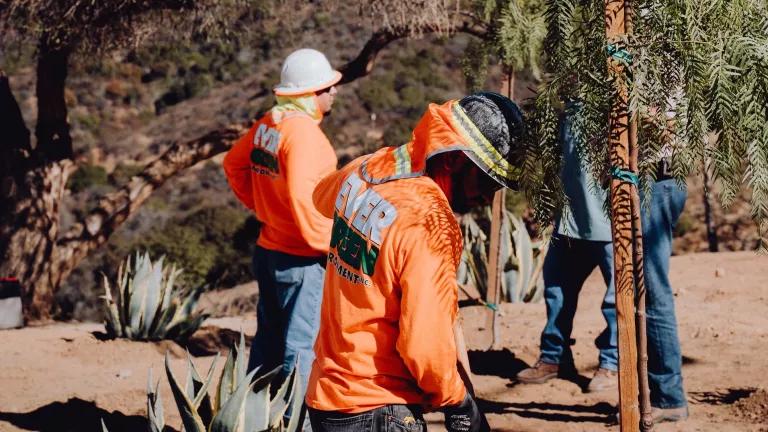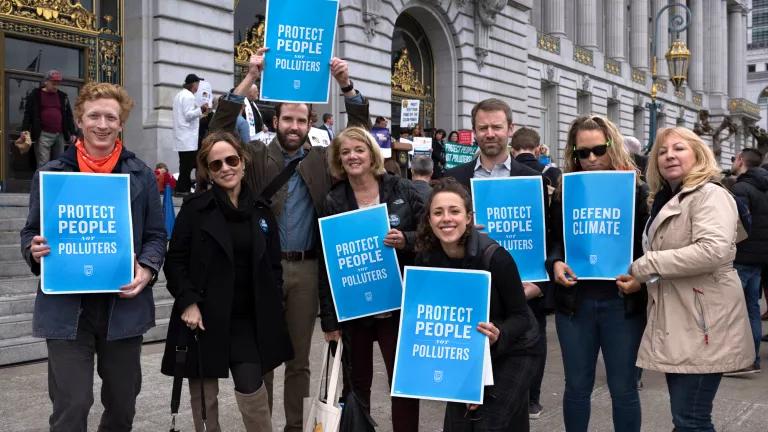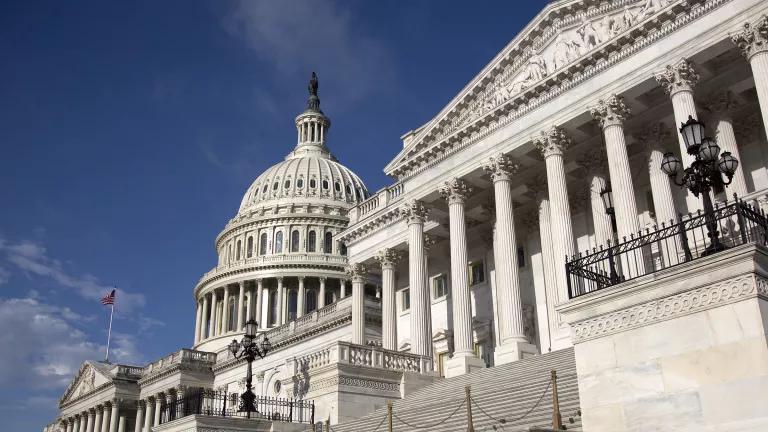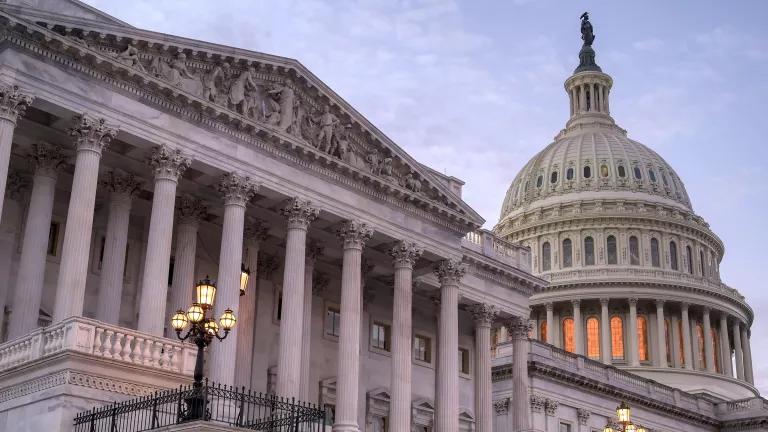Maryland Workers Need Strong, Enforceable Heat Protections
Heat-related health harms are entirely preventable, yet heat stress is a major occupational hazard in Maryland. Maryland workers urgently need a strong, enforceable occupational heat standard that protects their right to a safe and healthy working environment.

Landscapers planting trees and vegetation (2021)
In 2020, Maryland’s legislature passed House Bill 722, which tasked the Commissioner of Labor and Industry to develop and adopt regulations that require employers to protect employees from heat stress by October 1, 2022. In accordance with House Bill 722, the Maryland Occupational Safety and Health Administration (MOSH) hosted four regional informational sessions to gather input from the public on the proposed workplace heat standard. On September 22, I participated in one of the regional informational heat stress meetings. Here are my remarks as prepared.
Good afternoon. My name is Dr. Teniope Adewumi-Gunn. I am speaking on behalf of the Natural Resources Defense Council, which has more than 18,000 supporters in Maryland. Maryland workers urgently need MOSH to develop a strong, enforceable occupational heat standard that protects their right to a safe and healthy working environment.
Maryland's average summertime high temperatures have increased 1.4°C (2.5 °F) over the last century. The number of very hot days in Maryland (maximum temperature above 95 °F) are increasing and workers are amongst the first to suffer the impacts.
Heat-related health harms are entirely preventable, yet heat stress is a major occupational hazard in Maryland. From 2011 to 2019, 640 workers missed work for heat-related illnesses and injuries. While detailed data on heat deaths in the state is not readily available to the public, we know from MOSH census documents that heatstroke deaths at work do occur. Without specific, enforceable protections, these threats to Maryland workers will continue to grow as temperatures rise due to climate change.
Heat affects all workers. From those working outdoors in direct sunlight such as construction and farm workers, to indoor workers in spaces without adequate ventilation and cooling such as restaurants and manufacturing facilities.
We need a strong science- and health- based standard that puts the safety and wellbeing of workers first. As MOSH continues to develop these rules, we urge you to incorporate the following essential elements to protect as many workers as possible.
First, the hierarchy of controls should be emphasized in the standard. As much as feasible, employers should be encouraged to eliminate heat hazards, implement engineering controls, and provide access to personal protective equipment such as cooling vests. Moreover, supervisors and employers should get comprehensive training (in multiple languages) on symptoms of heat-related illness, acclimatization, anti-retaliation protections, heat-health first aid and emergency response procedures before the start of heat season and periodically throughout.
Second, there must be provisions to ensure that workers have paid scheduled and preventative rest breaks in the shade that increase as the temperature rises (e.g., once every two hours between 80 and 90°F, and once an hour above 90 °F). This allows workers who may be reluctant to take rest breaks due to fear of retribution to do so. Additionally, workers should have access to (and encouraged to drink) clean cool drinking water, appropriate bathroom facilities, and shaded or other cool spaces – all within close proximity to worksites and provided by employers.
Third, the standard should include clear, detailed acclimatization guidance for employers. The first few days of heat exposure are critical for workers not previously exposed to heat or coming back from at least a week away from working in the heat. Employers must ensure appropriate gradual increases in work as employees acclimatize, and to check on workers frequently.
Finally, the standard must have strong whistleblower protections to ensure workers who raise concerns about unsafe conditions are safe from retaliation.
As MOSH continues to draft and implement this standard, we stress that effective and sustainable solutions require a collaborative approach. This standard development process needs to start with workers, who should have a seat at the table to determine the best solutions for them. There should be better public engagement and a balanced advisory committee of workers, advocates, researchers, and industry to make recommendations. Additionally, the standard should be promulgated as soon as possible to protect workers when the heat season starts in early 2022.
We look forward to future engagement in this commonsense effort to protect Maryland workers from extreme heat.
Thank you!



